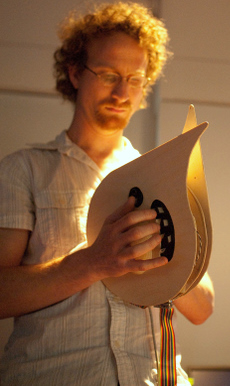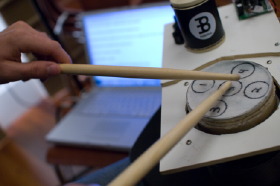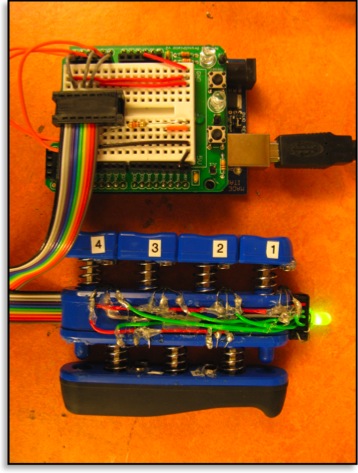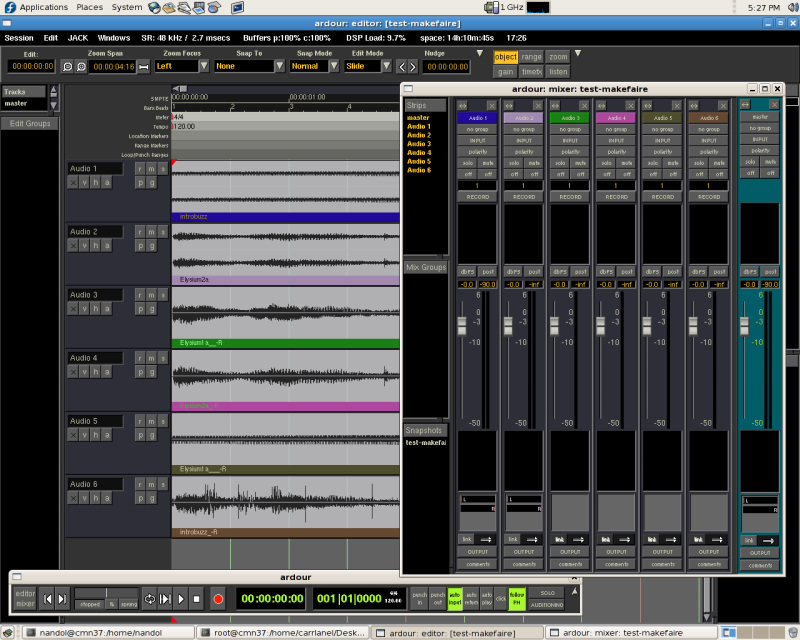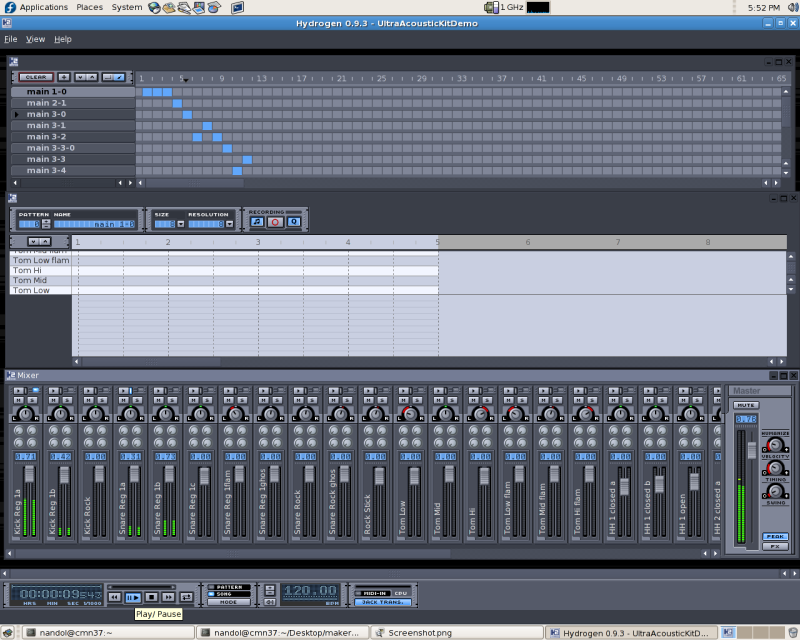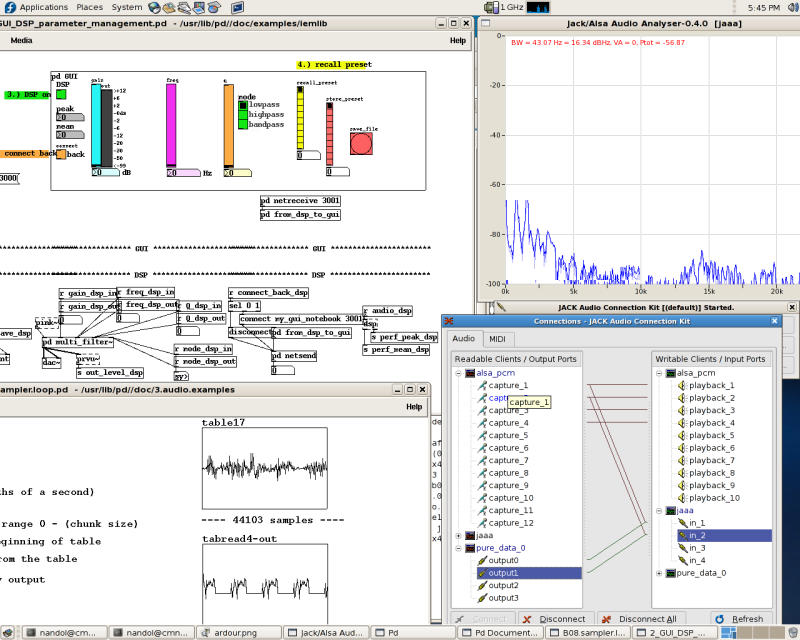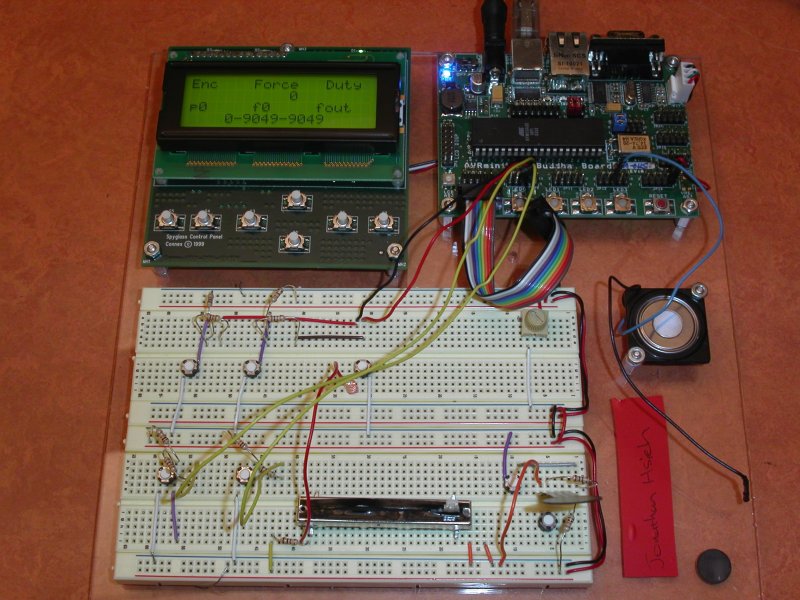MakerFaire09
Introduction
The Center for Computer Research in Music and Acoustics (CCRMA -- pronounced "karma") is an interdisciplinary center at Stanford University dedicated to artistic and technical innovation at the intersection of music and technology. We are a place where musicians, engineers, computer scientists, designers, and researchers in HCI and psychology get together to develop technologies and make art. In recent years, the question of how we interact physically with electronic music technologies has fostered a growing new area of research that we call Physical Interaction Design for Music. We emphasize practice-based research, using DIY physical prototying with low-cost and open source tools to develop new ways of making and interacting with sound. At the Maker Faire, we will demonstrate the low-cost hardware prototyping kits and our customized open source Linux software distribution that we use to develop new sonic interactions, as well as some exciting projects that have been developed using these tools. Below you will find photos and descriptions of the projects and tools we will demonstrate.
Maker Faire website: [1]
Magnjo - The Magnetically Augmented Banjo
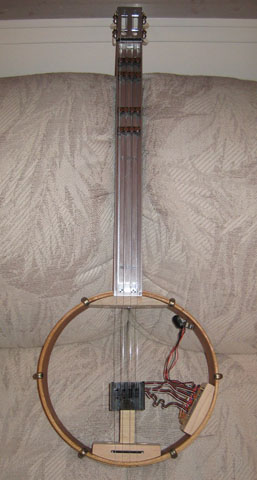 Magnjo is a fretless banjo that has magnets under its fingerboard to provide haptic feedback to a performer. The magnets are oriented in harmonic locations (similarly to frets) to inform the performer of tonal locations along the string. In order to feel the magnets, the performer must wear finger wrappings with iron fabric in them. Thus the performer's fingers are informed of the locations along the fingerboard corresponding to notes in the chromatic scale.
Magnjo is a fretless banjo that has magnets under its fingerboard to provide haptic feedback to a performer. The magnets are oriented in harmonic locations (similarly to frets) to inform the performer of tonal locations along the string. In order to feel the magnets, the performer must wear finger wrappings with iron fabric in them. Thus the performer's fingers are informed of the locations along the fingerboard corresponding to notes in the chromatic scale.
Haptic Drum
The word haptic comes from Greek and pertains to the sense of touch. The haptic drum harnesses the power of force-feedback to assist drummers in playing parts that would otherwise be difficult or impossible. This patent-pending device consists of a drum pad, a DSP, an amplifier, and a woofer. Whenever a drumstick impacts the drum pad, the woofer gives a small push in the upward direction, adding energy to the bouncing drumstick.
Kalichord
The Kalichord is a two-handed electro-acoustic instrument which acts as a controller for a physical string model. The user plucks virtual strings with one hand while playing bass lines with the other.
GRIP MAESTRO
The GRIP MAESTRO is a hand-exerciser that has been modified into a resistive one- or two-handed musical controller. The GRIP MAESTRO Mach 1 uses magnets and Hall Effect Sensors to detect the position of each of the exerciser's six pad-springs and sends this information to ChucK to drive musical synthesis, or other sound manipulation. The GRIP MAESTRO Mach 2 (presently in development) expands on this control structure by adding accelerometer data into the mix and by giving the player two GRIP MAESTOs, one for each hand. The goal of this interface is to provide real force resistance as feedback to the performer and thereby establish an engaging relationship between the performer and his/her audience.
Turntable Gestures for Computer Mediated Performance
Imagine if a computer can recognize turntablist moves, and depending on your scratch, respond musically!!!
Turntable Gestures for Computer Mediated Performance by Jason Sadural and Mike Gao explores the exciting field of gesture recognition applied to turntable techniques.
Utilizing ChucK, pD and Max MSP, turntable gestures used by two scratch DJs are sent across the network via OSC, to a single computer far far away.
When this computer recognizes that a particular move has been executed by one of the DJs,the gesture is decomposed, and the pertaining data is sent back across the network. Movements on the turntable are used to:
- seed algorithmic composition - seed algorithmic sound design - control Ableton Live - control algorithmic adjustment of groove / micro-timing - facilitate scalar navigation of a tonal space - control visuals
As an added novel bonus, a regular optical mouse has been converted into an infrared turntable tracker, providing an inexpensive DIY interface for turntable gesture capture.
JSASSynth - Modular Audio Synthesis for the Web
JSASSynth is a graphical programming environment, similar to Max/MSP or PD, that is written for the web. It uses HTML, CSS and Javascript for its user interface and Flash for its audio synthesis engine. This means that it is a portable solution for modular audio synthesis, since most of the web browsing public already uses these features. This project is an example of integrating synthesized audio into a webpage without depending on Flash for the user interface. By using Flash's ExternalInterface API, JSASSynth can create and control a modular synthesizer that is playing inside of a hidden Flash animation.
Catch Your Breath
Catch Your Breath is an installation version of an interactive auditory bio-feedback project currently underway with the Stanford medical school, which is designed to reduce respiratory irregularity in patients undergoing 4D CT scans for oncological diagnosis. It is a potential means to reduce motion-induced distortion in CT and MRI images. The installation version consists of a pendant donning a fiduciary marker. This marker is detected by a webcam and the motion of the subject's breathing is tracked and interpreted as real-time variable tempo adjustment to a stored musical file. The subject can then adjust his/her breathing to synchronize with a separate music track consisting of an accompaniment to the subject's music. When the breathing is regular and at the desired tempo the audible result sounds synchronous and harmonious.
Software Tools
Planet CCRMA at Home is a collection of open source programs that you can add to a computer running Fedora Linux to transform it into an audio/multi-media workstation with a low-latency kernel, current audio drivers and a nice set of music, midi, audio and video applications (with an emphasis on real-time performance). It replicates most of the Linux environment we have been using for years here at CCRMA for our daily work in audio and computer music production and research. Planet CCRMA is easy to install and maintain, and can be upgraded from our repository over the web. Bootable CD and DVD install images are also available. This software is free.
http://ccrma.stanford.edu/planetccrma/software
Ardour - Multitrack Sound Editor
Hydrogen - Drum Sequencer
Pd, Jack and Jaaa - Real-time audio tools
Hardware Tools
In our courses, we use a prototyping kit based on Atmel AVR microcontrollers, with Pascal Stang's AVRmini at the core. To the AVRmini, we attach an I2C LCD display, solderless breadboard strips, a loudspeaker and sometimes a MIDI jack. In student lab exercises and for prototyping, we hook up sensor circuits on the breadboard and send control signals to a Linux PC over USB, serial, MIDI or Ethernet in order to control open source real-time sound synthesis and processing software. These prototypes are then often built into larger-scale music and interactive sound art projects like the ones below that we will demonstrate at the Maker Faire.
